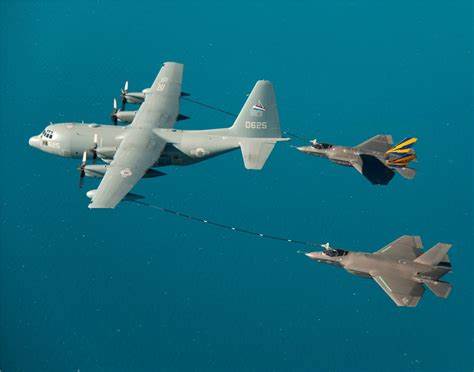
In a groundbreaking development poised to transform the aerial refueling paradigm, Lockheed Martin’s esteemed Skunk Works division has unveiled an avant-garde concept for a stealth aerial refueling tanker, catered to meet the strategic demands of future warfare.

Conceived in anticipation of the U.S. Air Force’s Next Generation Air-Refueling System (NGAS), this cutting-edge design is a testament to the pressing need for survivability in highly-contested airspace, particularly with the Pacific theater in mind.

Lockheed Martin’s Skunk Works, a bureau synonymous with aerospace innovation, has released concept imagery of what can only be described as a groundbreaking addition to aerial warfare: a stealthy tanker aircraft tailored to refuel stealth fighters and bombers like the F-35 Lightning II and B-21 Raider.

This audacious project aims to meet the Air Force’s specifications for the KC-Z, the anticipated stealth tanker programmed to enter service by the 2040s.

Renderings depict an aircraft sculpted for stealth, brandishing a blended wing/body structure that shuns traditional vertical surfaces, air intakes that meld into the aircraft’s profile, and canted vertical stabilizers.

Dubbed the Next Generation Aerial Refueling System (NGARS), the concept showcases a robust form factor with thick wing roots, enhancing its capacity to haul substantial quantities of aviation fuel.

The design is embellished with an aerial refueling boom extending elegantly from its tail.NGARS not only boasts a design optimized for concealment but is also equipped with an onboard kinetic defense system to neutralize incoming threats, a testament to the evolving battlefield where aerial supremacy is paramount.

A detail that harks back to the fighter-fortified bombers of WWII, this defense mechanism could manifest as short-range air-to-air missiles or even an advanced laser weapon.

Additionally, NGARS is projected to be flanked by Collaborative Combat Aircraft, unmanned companions armed to safeguard this vital asset.

The United States Air Force’s tanker fleet, the largest of its kind with over 450 aircraft, is a linchpin of global reach and operational flexibility.

Tankers enable other tankers to refuel in midair, extending their operational range exponentially. However, this formidable fleet faces obsolescence, with the KC-135s dating back to the 1960s and KC-10s to the 1980s.

As the Air Force envisions the phasing in of three new tankers, NGARS represents the final stage in this evolution, seeking to maintain the tactical edge in an era of next-generation Russian and Chinese missile threats.

With adversaries keenly observing America’s dependency on its support aircraft, the development of NGARS is strategic and timely. Russia’s Izdelie 810 serve as stark reminders of the need for NGARS’s stealth capabilities—these long-range missiles are primed to target the support systems that underpin the efficacy of American fighter and bomber aircraft.

The stealthy tanker is not merely a concept but a potential harbinger of a new class of combat and support aircraft, embracing stealth across the U.S. Air Force’s fleet.

This NGARS concept is a forward-looking initiative, a harbinger of a future where multifunctional stealth aircraft serve as a staple of aerial refueling, intelligence, reconnaissance, and even as arsenal ships for missile swarms. Yet, such innovative prospects are not devoid of challenges. Amidst budgetary uncertainties and evolving military requirements, the journey from concept to reality is a complex one, with competing designs and strategies vying for ascendancy.
Relevant articles:
– Skunk Works Reveals Its Stealthy Tanker That Will Play Hide and Seek With Russia and China, Popular Mechanics
– Lockheed Skunk Works unveils next, supercarblondie.com
– New Skunk Works Stealthy Tanker Concept Unveiled, The War Zone
– Lockheed Martin’s Skunk Works Unveils Stealthy Tanker Concept for Future Aerial Refueling, Defence.in
